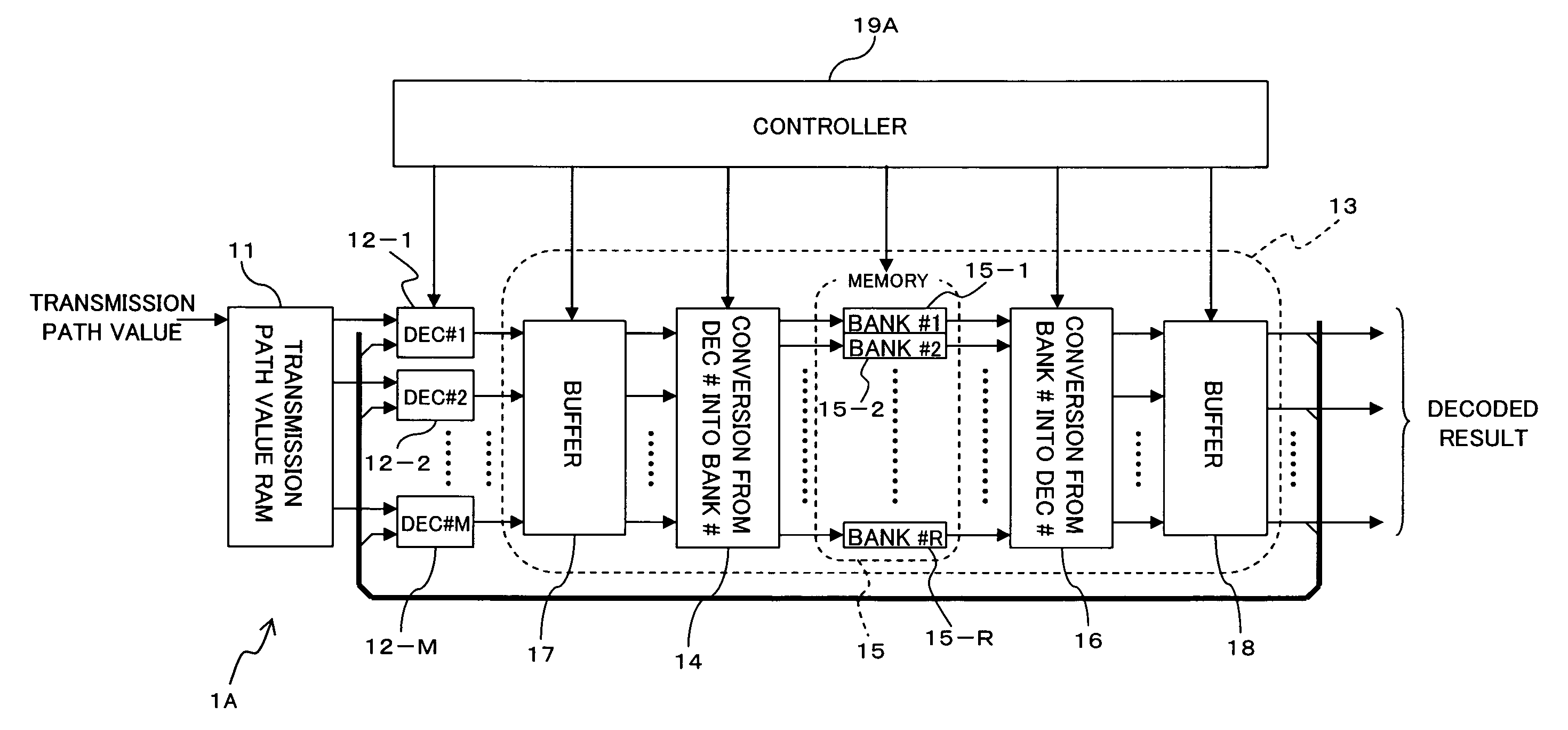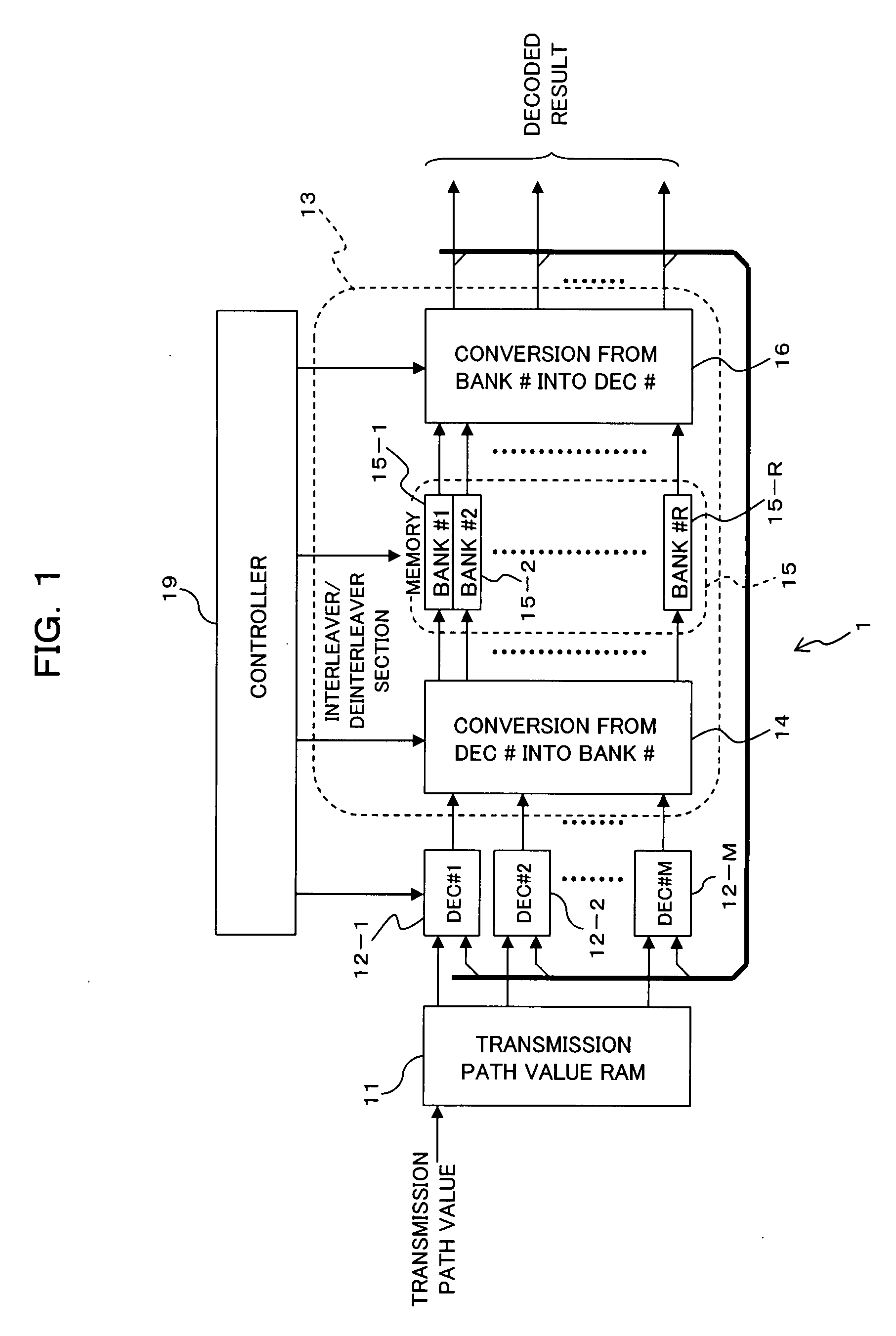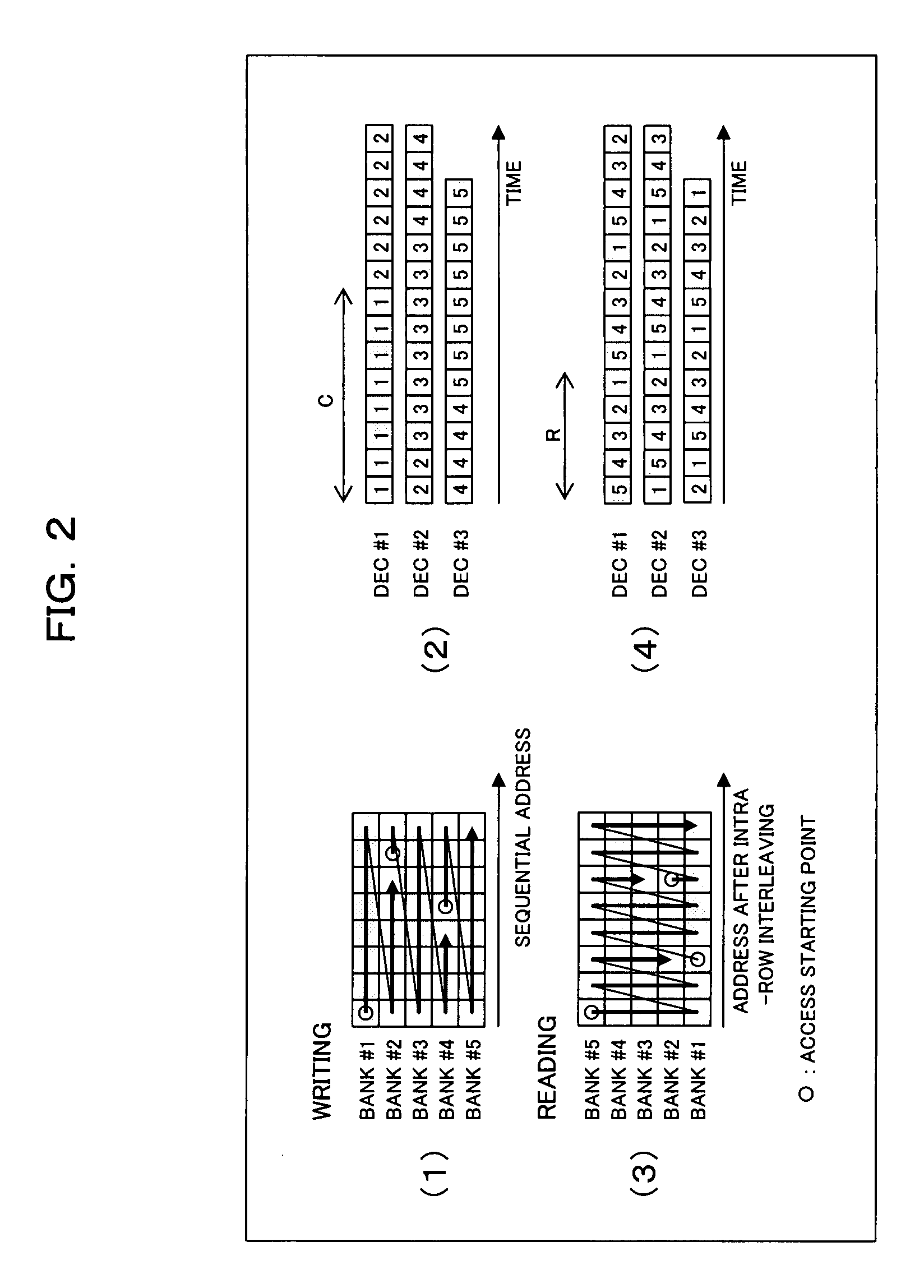Turbo decoder and turbo decoding method
a decoding method and turbo technology, applied in the direction of coding, redundant data error correction, instruments, etc., can solve the problems of access conflict, inability to avoid access conflict at the time of writing and reading, and difficulty in coping with the above problems
- Summary
- Abstract
- Description
- Claims
- Application Information
AI Technical Summary
Benefits of technology
Problems solved by technology
Method used
Image
Examples
first embodiment
[A] First Embodiment
[0075]FIG. 1 is a block diagram illustrating a main structure of a turbo decoder according to a first embodiment of the present invention, and the turbo decoder 1 shown in FIG. 1 is applied to a receiver composing a communication system shown in FIG. 10, for example. The turbo decoder 1 includes a transmission path value memory (RAM) 11, the M pieces (M is an integer of 2 or larger) of elements decoders (DEC#1 to DEC#M) 12-1 to 12-M, and an interleaver / deinterleaver section 13. The interleaver / deinterleaver section 13 includes parallel number (DEC#→bank#) converting section (connection switching section) 14, a memory section 15, a parallel number (bank#→DEC#) converting section (connection switching section) 16, and a controller (memory controller) 19. A structure of the receiver (turbo encoder) is the same as or similar to a structure shown in FIG. 11, for example.
[0076]The transmission path value RAM 11 stores received signals (signals to be decoded) ya, yb, an...
second embodiment
[B] Second Embodiment
[0099]FIG. 4 is a block diagram illustrating a main structure of a turbo decoder according to a second embodiment of the present invention. The turbo decoder 1A shown in FIG. 4 is different from the turbo decoder 1 shown in FIG. 1 in that a buffer section 17 is provided onto an input side of the connection switching section 14 and a buffer section 18 is provided onto an output side of the connection switching section 16 in the interleaver / deinterleaver section 13, and a controller (memory controller) 19A is provided instead of the controller 19. The other components having the same reference symbols have the same or similar functions as / to those of the above-mentioned components unless otherwise noted.
[0100]The buffer sections 17 and 18 can adjust (delay) output timings (phases) of the M-parallel input data (element decoded results) individually under the control of the controller 19A. Fucusing on the buffer section 18, as shown in (6) of FIG. 5, for example, th...
first modification
(B1) First Modification
[0109]In the second embodiment, when M pieces of the parallel element decoders 12-i do not have to be operated simultaneously, as shown in FIG. 6, the element decoders 12-i are operated by the controller (memory controller) 19B with the decoding start timings being shifted according to the phase shift. As a result, the phase shift between M pieces of the parallel element decoded results does not have to be absorbed by the buffer sections 17 and 18 (see (1) to (4) of FIG. 7).
[0110]As shown in FIG. 6, therefore, the turbo decoder 1B of this example, which has the structure of the turbo decoder 1 in the first embodiment as a basic structure, can avoid the access conflict in the case where the data about the decoding start points of the respective element decoders 12-i are present in one bank 15-j.
PUM
 Login to View More
Login to View More Abstract
Description
Claims
Application Information
 Login to View More
Login to View More - R&D
- Intellectual Property
- Life Sciences
- Materials
- Tech Scout
- Unparalleled Data Quality
- Higher Quality Content
- 60% Fewer Hallucinations
Browse by: Latest US Patents, China's latest patents, Technical Efficacy Thesaurus, Application Domain, Technology Topic, Popular Technical Reports.
© 2025 PatSnap. All rights reserved.Legal|Privacy policy|Modern Slavery Act Transparency Statement|Sitemap|About US| Contact US: help@patsnap.com



